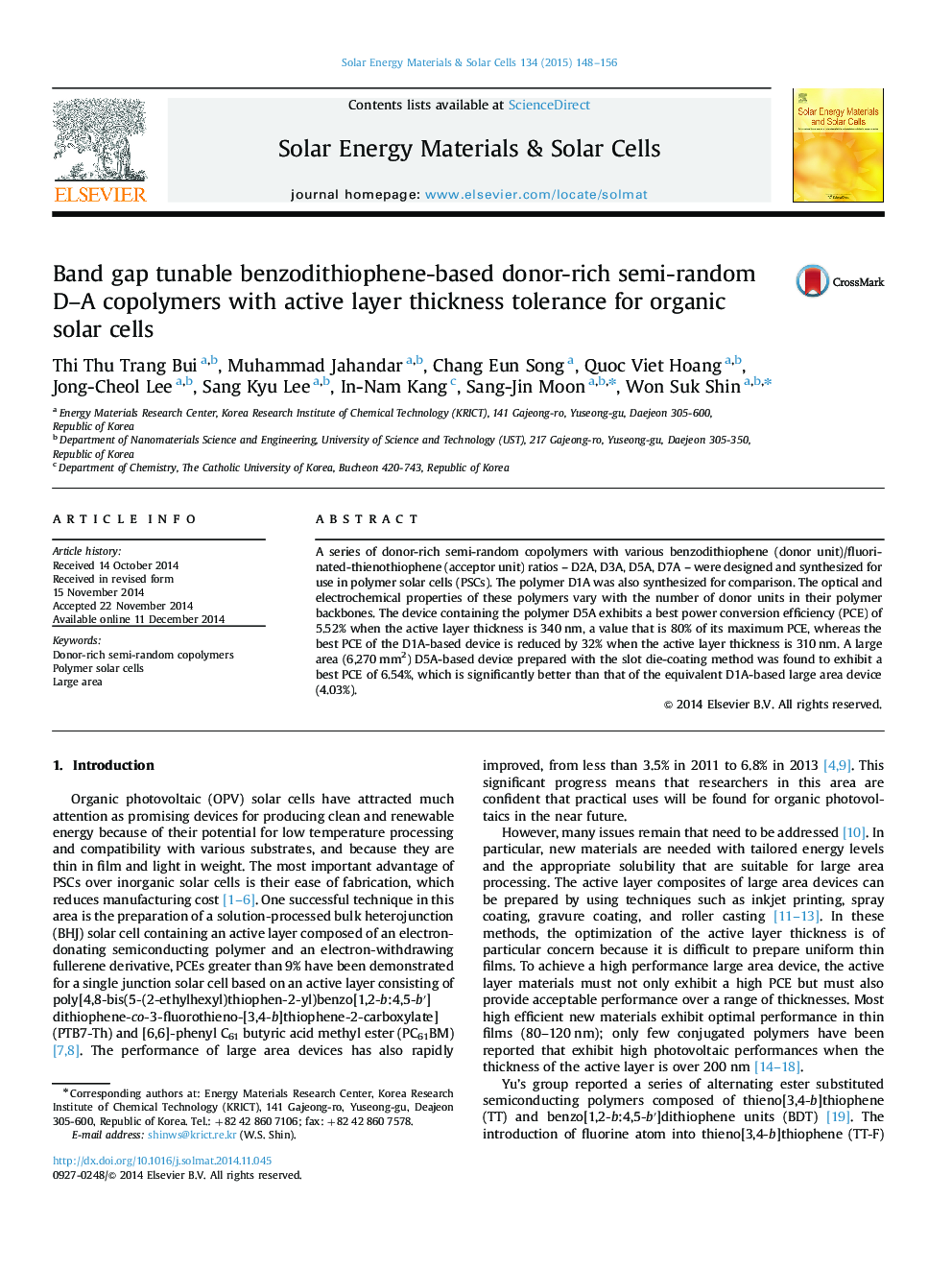| Article ID | Journal | Published Year | Pages | File Type |
|---|---|---|---|---|
| 77902 | Solar Energy Materials and Solar Cells | 2015 | 9 Pages |
•A series of tunable band gap donor-rich polymers have designed and synthesized.•These semi-random polymer devices exhibited high VOC and FF.•Module (active area of 6270 mm2) using D5A was fabricated and shown the PCE of 6.54%.
A series of donor-rich semi-random copolymers with various benzodithiophene (donor unit)/fluorinated-thienothiophene (acceptor unit) ratios – D2A, D3A, D5A, D7A – were designed and synthesized for use in polymer solar cells (PSCs). The polymer D1A was also synthesized for comparison. The optical and electrochemical properties of these polymers vary with the number of donor units in their polymer backbones. The device containing the polymer D5A exhibits a best power conversion efficiency (PCE) of 5.52% when the active layer thickness is 340 nm, a value that is 80% of its maximum PCE, whereas the best PCE of the D1A-based device is reduced by 32% when the active layer thickness is 310 nm. A large area (6,270 mm2) D5A-based device prepared with the slot die-coating method was found to exhibit a best PCE of 6.54%, which is significantly better than that of the equivalent D1A-based large area device (4.03%).
Graphical abstractText for Table of Contents: The tunable band gap polymers improved the performance of module fabricated by the slot-die coating method.Figure optionsDownload full-size imageDownload as PowerPoint slide
